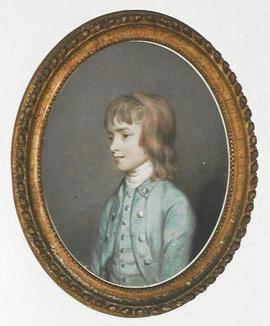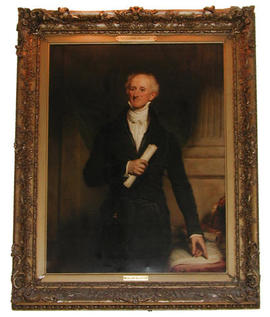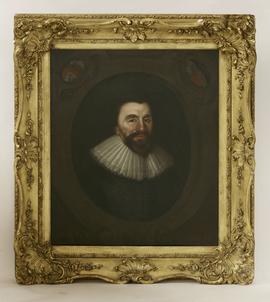ABBOT, CHARLES, 1ST BARON COLCHESTER, younger brother of John Farr Abbot (qv); b. 14 Oct 1757; adm. Mar 1763; KS (Capt) 1770; both “acted and looked Thais extremely well in the Eunuchus” of 1772 (Random Recollections of George Colman the Younger, 1830, i, 74); Captain of the School 1774; elected head to Christ Church, Oxford 1775, matr. 14 June 1775, Westminster Student 22 Dec 1775 - 20 Oct 1783, Faculty Student 20 Oct 1783 - res 17 Dec 1796; Chancellor’s Prize for Latin Verse 1777; Vinerian Scholar 1781, Fellow 1786-92; BCL 1783; DCL 1793; Geneva Univ. 1778-9; adm. Middle Temple 14 Oct 1768, called to bar 9 May 1783, Bencher 12 Feb 1802; in brother’s chambers at 11 Kings Bench Walk, Temple, Nov 1779; adm. Inner Temple 25 Nov 1784 and 29 Apr 1785, tenant of chambers there Nov 1784 - May 1788; adm Lincoln’s Inn 26 May 1785; FSA 13 Dec 1792; FRS 14 Feb 1793; Clerk of the Rules, Court of King’s Bench 1794-1801; MP Helston 19 Jun 1795-1802, Woodstock 1802-6, Oxford University 1806-Jun 1817; made his parliamentary reputation as chairman, Select Committee on Finance 1797-8; introduced first Census Act into House of Commons Dec 1800; Chief Secretary for Ireland Feb 1801-Feb 1802, also Secretary of State for Ireland Jun 1801 - Feb 1802; Privy Councillor 21 May 1801; Recorder of Oxford May 1801-Oct 1806; Keeper of Privy Seal (I) from May 1801; hon. LLD Trinity Coll. Dublin 6 Jun 1801; elected Speaker of the House of Commons 10 Feb 1802; resigned on account of ill-health 28 May 1817; cr. Baron Colchester 3 Jun 1817; travelled on European Continent 1819-22; on return took active part in politics until death; a Busby Trustee from 18 May 1802; his Diary and Correspondence were published by his son Charles Abbot, 2nd Baron Colchester (qv), in 1861; m. 29 Dec 1796 Elizabeth, eldest dau. of Sir Philip Gibbes, Bart., Spring Head, Barbados, West Indies; d. 8 May 1829; buried in North Transept, Westminster Abbey. Arms up School. DNB.
BRETT, WILLIAM BALIOL, 1ST VISCOUNT ESHER, brother of Wilford George Brett (qv); b. 13 Aug 1815; adm. (G) 11 Jan 1830; Gonville and Caius Coll. Cambridge, adm. pens. 25 Jun 1835, matr. Mich. 1835; rowed in Cambridge eight against Leander 1837, 1838, and against Oxford 1839; stroked the Cambridge Subscription Rooms eight which won the Grand Challenge Cup at Henley 1841; BA 1840; MA 1845; adm. Lincoln’s Inn 30 Apr 1839, called to bar 29 Jan 1846, Bencher 1861-8; Northern circuit; QC 22 Feb 1861; contested (Cons) Rochdale 1865; MP (Cons) Helston 5 Jul 1866 - Aug 1868; Solicitor-Gen., 10 Feb - Aug 1868; knighted 29 Feb 1868; Serjeant-at-law; Justice of the Common Pleas 24 Aug 1868-75; Judge of the High Court, Queen’s Bench Division, 1875-6; Lord Justice of Appeal 27 Oct 1876 - Apr 1883; Privy Councillor 28 Nov 1876; Master of the Rolls 3 Apr 1883 - Oct 1897; cr. Baron Esher 24 Jul 1885; cr. Viscount Esher 11 Nov 1897; Hon. Fellow, Gonville and Caius Coll., 7 Oct 1886; a Busby Trustee 18 May 1886 - Jun 1890; m. 3 Apr 1850 Eugénie, only dau. of Louis Mayer, Lyon, France, and step-dau. of Col. John Gurwood CB; d. 24 May 1899. DNB.
BRYDGES, JAMES, 1ST DUKE OF CHANDOS, fourth but eldest surviving son of James Brydges, 8th Baron Chandos, Ambassador to Constantinople, and Elizabeth, eldest dau. of Sir Henry Bernard, Kt., Bridgnorth, Shropshire, Turkey merchant; b. 6 Jan 1673/4; adm. 1686; an interesting letter, written by his father from Constantinople, confides his “three poor little boys (all the treasure the kind God of his kind mercy hath spared me)” to Richard Busby (qv), then Head Master (GM 1792, i, 39); New Coll. Oxford, matr. 21 Jun 1690; FRS 30 Nov 1694; MP Hereford Jul 1698 - 16 Oct 1714; member, Council to Lord High Admiral, 29 Mar 1703 - 5 Apr 1705; Paymaster-Gen. of the Forces Abroad, 10 May 1705 – Sep 1713; succ. father as 9th Baron Chandos 16 Oct 1714; cr. Earl of Carnarvon 19 Oct 1714 and Duke of Chandos 29 Apr 1719; Lord Lieut., Herefordshire 11 Sep 1721 - 16 Jul 1741, and of Radnorshire from 11 Sep 1721; Privy Councillor 11 Nov 1721; Chancellor, Univ. of St. Andrews; the “princely” Chandos expended some £200, 000 in building his country house at Canons, near Edgware, Middlesex; Handel spent two years there composing anthems for the chapel, and writing Esther, his first English oratorio; Defoe describes the splendour of the house in his Tour through England, and Pope refers to it as “Timon’s Villa” in his Epistle to Lord Burlington; m. 1st, 27 Feb 1695/6 Mary, dau. of Sir Thomas Lake, Kt., Canons, Whitchurch, Middlesex; m. 2nd, 4 Aug 1713 Cassandra, dau. of Francis Willoughby FRS, naturalist, Wollaton, Notts. ; m. 3rd, Apr 1736 Lydia Catharine, widow of Sir Thomas Davall MP, and dau. of John Vanhatten; d. 9 Aug 1744. DNB.
BURDETT, SIR FRANCIS, BART., brother of Robert Burdett (adm. 1776, qv); b. 25 Jan 1770; adm. 16 Sep 1778; expelled as one of the ringleaders of the rebellion “up School” against Samuel Smith (qv), Head Master, autumn 1786; Christ Church, Oxford, matr. 13 Dec 1785; Grand Tour (France, Italy) 1789-91; succ. his grandfather as 5th baronet, 15 Feb 1797; MP Boroughbridge 1796-1802, Middlesex 1802- 9 Jul 1804, 4 Mar 1805 - 10 Feb 1806, Westminster 1807-37, Wiltshire North from 1837; denounced the war with France, and frequently protested against the suspension of the Habeas Corpus Act; imprisoned on political charges in 1810 and 1820; a zealous advocate of parliamentary reform, and of Catholic emancipation; a vehement opponent of flogging in the army, and corruption in parliament; a staunch Radical until the passage of the Reform Act of 1832, but afterwards became a strong Tory and “thanked God there was another House”; m. 5 Aug 1793 Sophia, youngest dau. of Thomas Coutts, London, banker; d. 23 Jan 1844. DNB.
BURGOYNE, JOHN, second son of Capt. John Burgoyne, Sherborne, Warwicks., and Anna Maria, dau. of Charles Burneston, Hackney, Middlesex; b. 4 Feb 1722/3; in school lists 1733, 1735-8; an intimate friend of James Smith Stanley, Lord Strange (qv); Cornet, 1st Royal Dragoons, 14 Jul 1743; Lieut., 22 Feb 1745; Capt., 1 Jul 1745; sold out 31 Oct 1751, on account of his debts, and resided for some years in France and Italy; re-entered Army as Capt., 11th Dragoons, 14 Jun 1756; Capt. -Lieut. and Lieut. -Col., 2nd Foot Guards, 10 May 1758; served in expeditions to Cherbourg and St. Malo 1758-9; raised 16th Dragoons and gazetted as Lieut. -Col. commandant, 4 Aug 1759; served in Portugal as Brig. -Gen., 1762; Brevet Col., 8 Oct 1762; Col. 16th Dragoons, 18 Mar 1763 - Oct 1779; Governor of Fort William 1769-79; Maj. -Gen., 25 May 1772; served in America 1775; present at battle of Bunker Hill; second in command under Sir Guy Carleton in Canada, 1776, in supreme command 1777; Lieut. -Gen., 29 Aug 1777; surrendered to Gates at Saratoga, 17 Oct 1777; allowed by Washington to return to England on parole, where he resigned his regiment and governorship; on the return of his political friends to power in 1782 became Commander-in-Chief, Ireland, 7 Jun 1782, holding post to 1784; Col., 4th Foot, from 7 Jun 1782; MP Midhurst 1761-8, Preston from 29 Nov 1768; proposed in 1772 that the East India Company should be controlled by the government; made a violent attack on Clive in May 1773, and was a manager of the impeachment of Warren Hastings, 1787; Privy Councillor (I) 4 May 1782; member, Society of Dilettanti, 1772; contributed to the Rolliad and Probationary Odes; author, The Heiress, 1786, and other plays; m. 1743 Lady Charlotte Stanley, sister of James Smith Stanley, Lord Strange (qv); d. 4 Aug 1792; buried North Cloister, Westminster Abbey. DNB.
CARLETON, DUDLEY, 1ST VISCOUNT DORCHESTER, son of Anthony Carleton, Brightwell Baldwin, Oxfordshire, and his second wife Jocosa, dau. of John Goodwin, Winchington, Bucks.; b. 10 Mar 1573/4; adm.; QS ; elected to Christ Church, Oxford 1591, matr. 11 Feb 1591/2, Westminster Student to 1607; BA 1595; MA 1600 (incorp. Camb. 1626); DCL 31 Aug 1636; Secretary to Sir Thomas Parry, Ambassador to Paris, 1602; MP St. Mawes Mar 1603/4 - Feb 1610/1, Hastings Jan 1625/6 - May 1626; ? adm. Grays Inn 21 Feb 1604/5; Secretary to Henry Percy, Earl of Northumberland; suspected of complicity in the Gunpowder Plot, but succeeded in clearing himself while under arrest; Ambassador to Venice 1610-5, The Hague 1616-25; knighted Sep1610; Vice-Chamberlain of the Household 1625-6; Privy Councillor 1626; Envoy to Paris 1626, The Hague 1626-8; created Baron Carleton 22 May 1626 and Viscount Dorchester 25 Jul 1628; Secretary of State from 18 Dec 1628; the most sagacious and successful British diplomat of his day; m. 1st, Nov 1607 Anne, dau. of George Gerrard, Dorney, Bucks., and step-dau. of Sir Henry Savile (founder of Savilian Professorship at Oxford); m. 2nd, 1630 Anne, widow of Paul Bayning, 1st Viscount Bayning, and dau. of Sir Henry Glemham, Little Glemham, Suffolk; d. 15 Feb 1631/2. Buried Westminster Abbey, monument in St. Paul’s Chapel. DNB.
CAVENDISH-BENTINCK, LORD WILLIAM, second son of William Henry Cavendish-Bentinck, 3rd Duke of Portland (qv); b. 14 Sep 1774; at school under Vincent (Steward, Anniversary Dinner 1798, 1809); Ensign, 2nd Foot Guards, 21 Jan 1791; Capt., 2nd Light Dragoons, 1 Aug 1792; 11th Light Dragoons, 20 Feb 1793; Maj., 28th Foot, 21 Feb 1794; Lieut. -Col., 24th Light Dragoons, 20 Mar 1794; ADC to King George III and Brevet Col., 1 Jan 1798; Major-Gen., 1 Jan 1805; Col., 20th Light Dragoons, 4 Jan 1810 – Jan 1813 [check]; Lieut. -Gen., 4 Jun 1811; Col., 11th Light Dragoons, from 27 Jan 1813; Gen., 27 May 1825; served on Duke of York’s staff in the Netherlands 1794, with Marshal Suvorov’s army in Northern Italy 1799, and subsequently with Austrian forces until 1801; MP Camelford 19 Mar 1796-96, Nottinghamshire 1796 - Apr 1803; Governor of Madras, 17 Nov 1802, arriving in India 30 Aug 1803 and holding post until 11 Sep 1807; recalled by Directors of East India Co. following mutiny at Vellore, for which he was held mainly responsible; on staff of Sir Henry Burrard in Portugal, Aug 1808; commanded a brigade at battle of Corunna; Envoy Extraordinary to Court of Sicily, and Commander-in-Chief of British Forces there, 1811-4, conducting expeditions against enemy forces on east coast of Spain and at Genoa; MP Nottinghamshire 1812 - 12 Mar 1814, 8 Jul 1816-26, King’s Lynn 1826 - Jan 1828; KB 1 Feb 1813; GCB 2 Jan 1815; GCH 1817; Governor-General of Bengal 4 Jul 1827 - Nov 1834, also Commander-in-Chief 16 May 1833; Privy Councillor 17 Aug 1827; Governor-General of India 14 Nov 1834 - 20 Mar 1835; the first British statesman who adopted the policy of governing India in the interests of the people of that country; MP (Whig) Glasgow from 17 Feb 1836; Clerk of the Pipe in the Exchequer Oct 1783 - Oct 1833 (office abolished); m. 19 Feb 1803 Lady Mary Acheson, second dau. of Arthur Acheson, 1st Earl of Gosford (I); d. at Paris 17 Jun 1839. DNB.
CAVENDISH-BENTINCK, WILLIAM HENRY, 3RD DUKE OF PORTLAND, elder son of William Bentinck, 2nd Duke of Portland, and Lady Margaret Cavendish Harley, only dau. of Edward Harley, 2nd Earl of Oxford (qv); b. 14 Apr 1738; styled Marquis of Titchfield to 1762; adm. May 1747 (Watts'); left Dec 1754; Christ Church, Oxford, matr. 4 Mar 1755; MA 1 Feb 1757; DCL 7 Oct 1792; LLD Tinity Coll. Dublin 18 May 1782; assumed additional surname of Cavendish 1755; MP Weobley 1761 - 1 May 1762; succ. father as 3rd Duke of Portland 1 May 1762; Lord Chamberlain 15 Jul 1765 - 26 Nov 1766; Privy Councillor 10 Jul 1765; Lord Lieut., Ireland, 10 Apr - 15 Sep 1782; Prime Minister and First Lord of the Treasury 21 Apr - 19 Dec 1783; although previously a committed Whig politician, he became alarmed by the French Revolution and joined William Pitt’s government in 1794; Secretary of State for Home Affairs, 11 Jul 1794 - 30 Jul 1801, Lord President of the Council 30 Jul 1801 - 14 Jan 1805; KG 16 Jul 1801; Prime Ministry and First Lord of the Treasury 31 Mar 1807 - 28 Sep 1809, when he resigned through ill-health; Chancellor of Oxford University from 27 Sep 1792; Lord Lieut., Nottinghamshire, from 19 Jun 1795; FRS 5 Jun 1766; a Busby Trustee from 14 Mar 1765; m. 8 Nov 1766 Lady Dorothy Cavendish, only dau. of William Cavendish, 4th Duke of Devonshire PC KG; d. 30 Oct 1809. DNB.
COTTON, SIR ROBERT BRUCE, BART., eldest son of Thomas Cotton MP, Conington, Hunts., and his first wife Elizabeth, dau. of Francis Shirley, Staunton Harold, Leics.; b. 22 Jan 1570/1; at school under Grant (GEC, Complete Baronetage, i, 45); Jesus Coll. Cambridge, matr. 22 Nov 1581; BA 1585/6; collected manuscripts and coins; settled in Cotton House, Old Palace Yard, Westminster, which became a resort for scholars and antiquaries; made antiquarian tour with his old schoolmaster William Camden, 1600; knighted 11 May 1603; a favourite at court in the early years of the reign of James I; MP Huntingdonshire 1604-11, Old Sarum 1624, Thetford 1625, Castle Rising 1628-9; created baronet 29 Jun 1611; contributed to Speed’s History of England, 1611, and to Camden’s History of Elizabeth 1615; imprisoned Oct 1615- Jun 1616 for trying to screen his patron, the Earl of Somerset, by altering dates of letters; became friendly with Sir John Eliot, and in 1625 openly attached himself to the parliamentary opposition to the Crown; author, History of Henry III, 1627, and The Dangers wherein the Kingdom now standeth and the Remedye, 1628; treated as an enemy by the court in 1628-9, and after proceedings in the Star Chamber was deprived of access to his library; this library, which was later to form the nucleus of the library of the British Museum (now British Library), was moved to Ashburnham House in 1730, suffering damage by fire there on 23 Oct 1731, and was then temporarily housed in the Old Dormitory; m. 1592 Elizabeth, dau. of William Brocas, Theddingworth, Leics.; d. 6 May 1631. DNB.
COTTON, STAPLETON, 1ST VISCOUNT COMBERMERE, second son of Sir Robert Salusbury Cotton, Bart. (qv); b. 14 Nov 1773; adm. 28 Jan 1785; at school four years; 2nd Lieut., 23rd Foot, 26 Feb 1790; 1st Lieut., 13 Apr 1791; Capt., 6th Dragoon Guards, 28 Feb 1793; Maj., 59th Foot, 1794; Lieut. -Col., 25th Light Dragoons, 9 Mar 1794; Brevet Col., 1 Jan 1800; Lieut. -Col., 16th Light Dragoons, 14 Feb 1800; served in Flanders 1793-4, at Cape Town 1795, in campaign against Tippoo Sahib 1799, and in Dublin during Emmett’s insurrection 1800; Brig. -Gen., 11 Feb 1804; Maj. -Gen., 30 Oct 1805; commanded allied cavalry during part of Peninsular War; wounded at Salamanca 1812; Lieut. -Gen., 1 Jan 1812; Col., 20th Light Dragoons, 27 Jan 1813 – Jan 1821 [check]; took part in Pyrenees Campaign, 1813-4; commanded allied cavalry in France, 1815-6; Governor of Barbados 1816-20; Col., 3rd Dragoons, 25 Jan 1821 – Sep 1828; Commander-in-Chief, Ireland, 1822-5; Gen., 27 May 1825; Commander-in-Chief, East Indies, 9 Feb 1825 - 1 Jan 1830; captured city of Bhurtpore, 28 Jan 1826; Col., 1st Life Guards, from 16 Sep 1829; Constable of the Tower (and Lord Lieut., Tower Hamlets) from 11 Oct 1852; Field-Marshal, 2 Oct 1855; MP Newark 1806 - 17 May 1814; succ. father as 6th baronet 24 Aug 1809; KB 21 Aug 1812; created Baron Combermere 17 May 1814, with annuity of £2000 p. a. for two generations; GCB 2 Jan 1815; GCH 1817; Governor of Sheerness 25 Jan 1821 – still 1829; Privy Councillor (I) 21 Nov 1822; created Viscount Combermere 8 Feb 1827; DCL Oxford Univ. 23 Jun 1830; Privy Councillor 16 Dec 1834; KCSI 19 Aug 1861; m. 1st, 1 Jan 1801 Lady Anne Maria Pelham-Clinton, eldest dau. of Thomas Pelham-Clinton, 3rd Duke of Newcastle, Major-Gen. in the Army; m. 2nd, 22 Jun 1814 Caroline, second dau. of Capt. William Fulke Greville RN; m. 3rd, 2 Oct 1838 Mary Woolley, dau. of Thomas Gibbings MD, Gibbings Grove, co. Cork; d. 21 Feb 1865. DNB.


